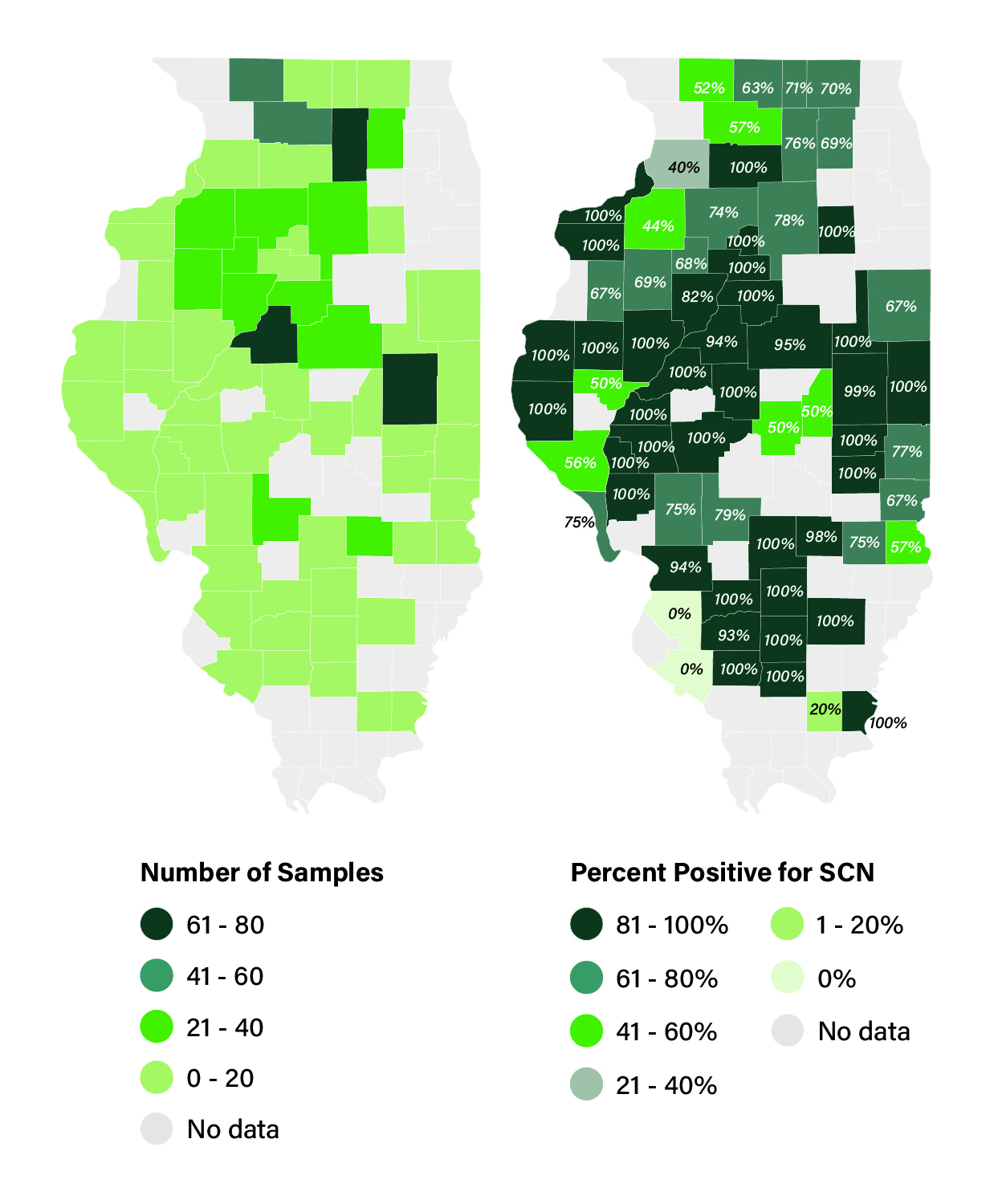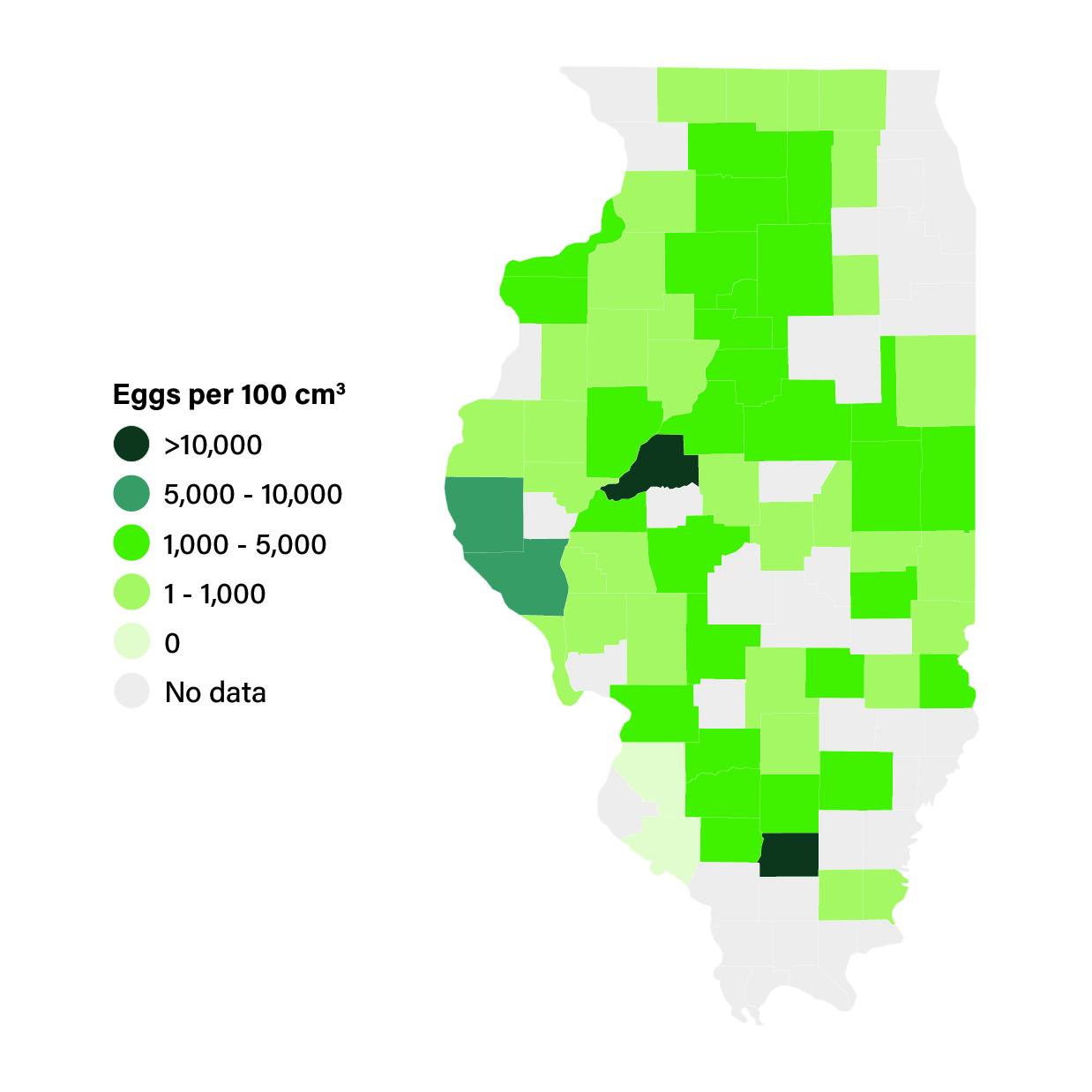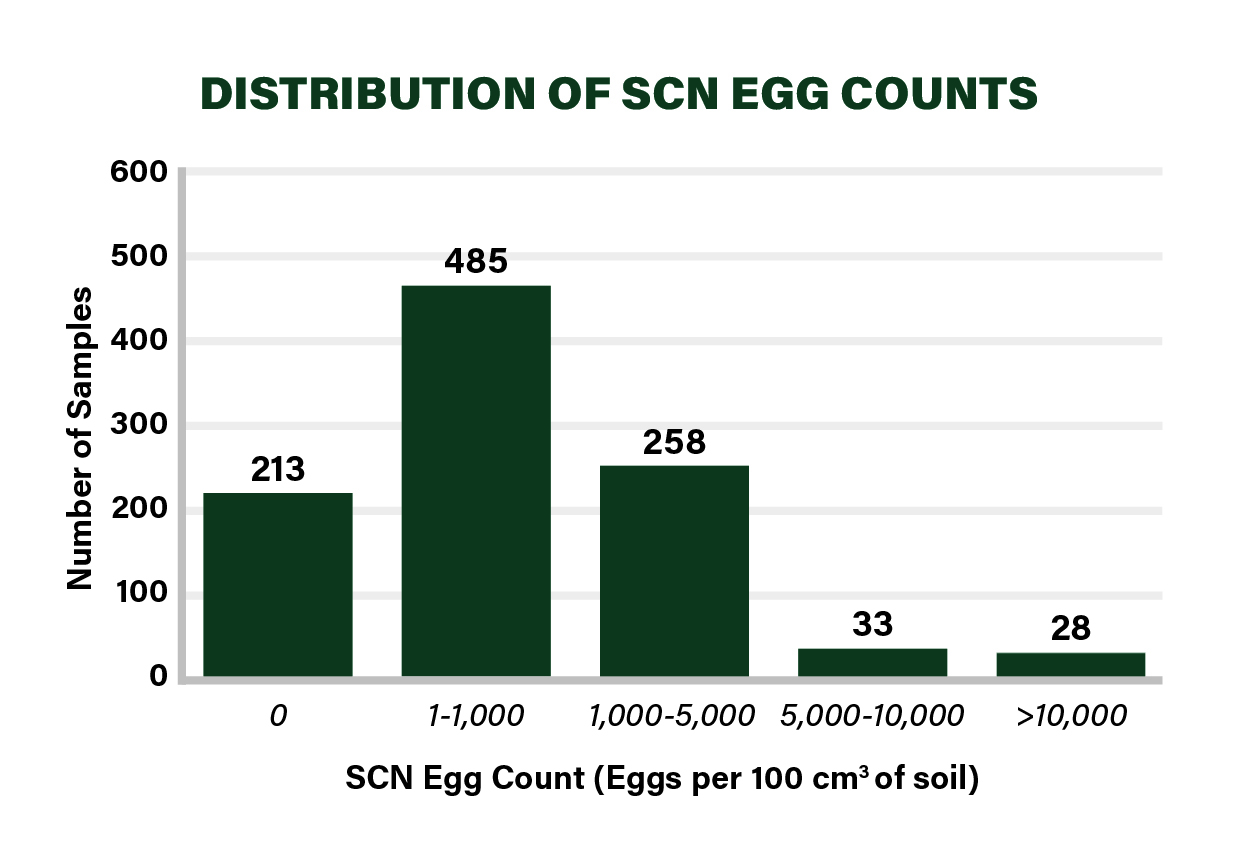Project Leader: Nathan Schroeder, University of Illinois
Purpose: Soybean cyst nematode (SCN) is considered the most damaging pathogen of soybeans in the U.S., and is now found in every county in Illinois. SCN has been controlled using resistant soybean varieties. However, most of these varieties rely on a single genetic source (PI 88788), which has been continuously used for SCN control for decades. As expected, many SCN populations are adapting to PI 88788. It is impossible to know if an individual farmer’s SCN control strategies are effective without sampling for the pest. This survey allows farmers to assess their fields at a local level and make informed management decisions.
Approach: Illinois farmers and agronomists submitted free samples for SCN testing to the University of Illinois Plant Clinic. Farmers requested a kit with instructions on sampling best practices via email (freescntesting@illinois.edu). Samples with high egg counts (greater than 5,000 eggs per 100 cm3 of soil) were kept for an additional test, called an HG type test, to determine if that population has developed resistance. Find more information at FieldAdvisor.org/SCNtesting.
Results:
- As expected, SCN is widely distributed across the state (Figure 1).
- From the 1,017 samples received from September 2023 to August 2024, the average SCN population was 1,512 eggs per 100 cm3 of soil. While this number suggests a moderate level of SCN infestation, the numbers varied tremendously across sites (Figure 2).
- Approximately 34% of samples had fewer than 100 eggs per 100 cm3. This suggests that while PI 88788 sources of resistance are still generally effective, some populations are becoming less responsive to PI 88788.
- A farmer with a relatively low SCN egg count (less than 1,000 eggs per 100 cm3 of soil) and in a regular rotation plan is likely experiencing minimal yield loss and can continue their current management approach. They should plan to test the same field in four to five years. In contrast, a farmer with a very high egg count (above 10,000 eggs per 100 cm3 of soil) should consider planting a non-host crop, like corn, during the upcoming year and test the field again after the non-host to make sure the population has decreased.
Key Takeaway: Farmers should use their SCN egg counts to help guide their SCN management decisions.

Figure 1 shows the number of samples submitted for SCN testing from each county and the percent of those samples that were positive for SCN as measured by the University of Illinois Plant Clinic. No data indicates no samples were received from that county.

Figure 2 shows the county average of SCN egg counts per 100 cm3 of soil from the samples submitted between September 2023 to August 2024.

Figure 3 shows the how many samples submitted had various levels of SCN egg counts detected. Of the 1,017 samples submitted across the state, about 69% had 1,000 eggs per 100 cm3 or less.


 and then
and then